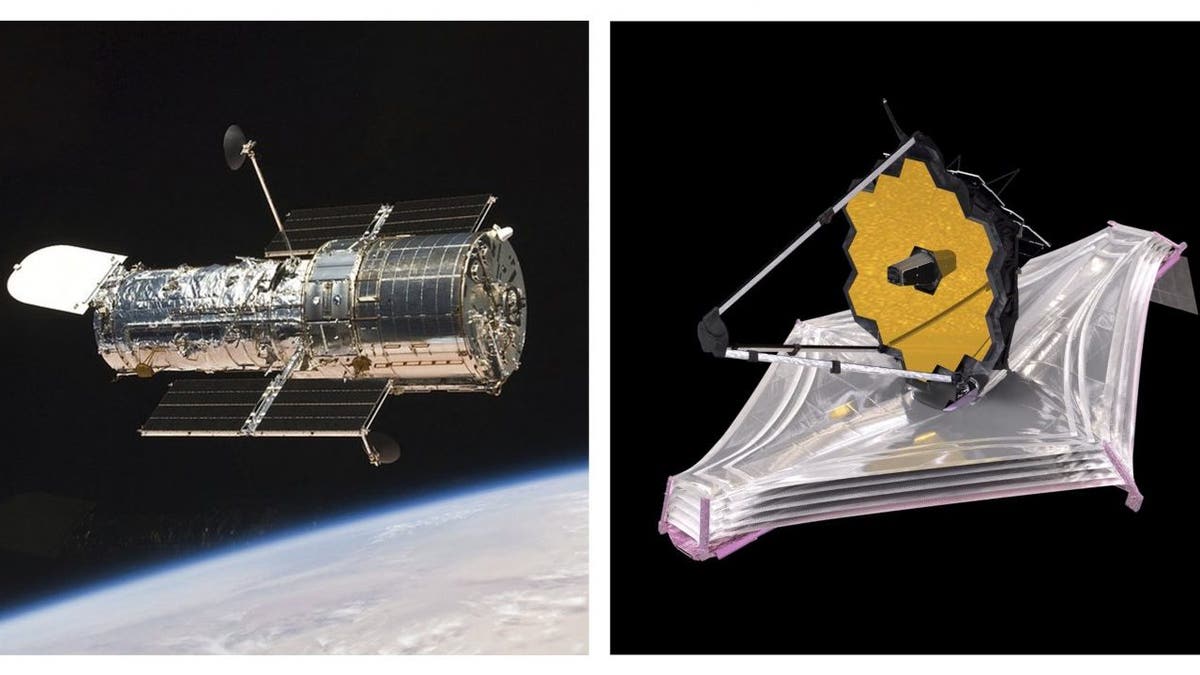NASA trying to keep International Space Station in orbit amid Russian conflict
Author and former NASA engineer Homer Hickam joins 'Fox & Friends First' to discuss Russia's threat to withdraw support for the International Space Station.
NASA’s new space telescope has gazed into the distant universe and shown perfect vision: a spiky image of a faraway star photobombed by thousands of ancient galaxies.
The image released Wednesday from the James Webb Space Telescope is a test shot — not an official science observation — to see how its 18 hexagonal mirrors worked together for a single coordinated image taken 1 million miles (1.6 million kilometers) away from Earth. Officials said it worked better than expected.

NASA James Webb Space Telescope Project Manager Bill Ochs monitors the progress of the observatory’s second primary mirror wing. (NASA/Bill Ingalls)
NASA CONFIRMS U.S. ASTRONAUT WILL RETURN WITH COSMONAUT ON RUSSIAN SPACECRAFT LATER THIS MONTH
Last month, NASA looked at a much closer star with 18 separate images from its mirror segments.
Scientists said they were giddy as they watched the latest test photos arrive. NASA’s test image was aimed at a star 100 times fainter than the human eye can see — 2,000 light-years away. A light-year is nearly 6 trillion miles (9.7 trillion kilometers).
The shape of Webb’s mirrors and its filters made the shimmering star look more red and spiky but the background really stole the show.

This combination of images made available by NASA shows the Hubble Space Telescope orbiting the Earth (NASA via AP)
"You can’t help but see those thousands of galaxies behind it, really gorgeous," said Jane Rigby, Webb operations project scientist.
NASA ASTRONAUT BREAKS RECORD FOR LONGEST US SPACEFLIGHT
Those galaxies are several billions of years old. Eventually, scientists hope Webb will see so faraway and back in time that it will only be "a couple hundred million years after the Big Bang," she said.

This image made available by the European Space Agency shows thousands of galaxies captured by the Hubble Space Telescope in observations from 2002-2009. (Leiden University and the HUDF09 Team via AP)
The first science images won’t come until late June or early July.
CLICK HERE TO GET THE FOX NEWS APP
The $10 billion Webb — successor to the nearly 32-year-old Hubble Space Telescope — blasted off from South America in December and reached its designated perch in January.

